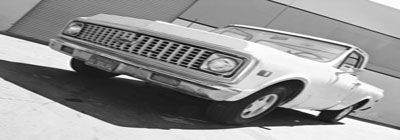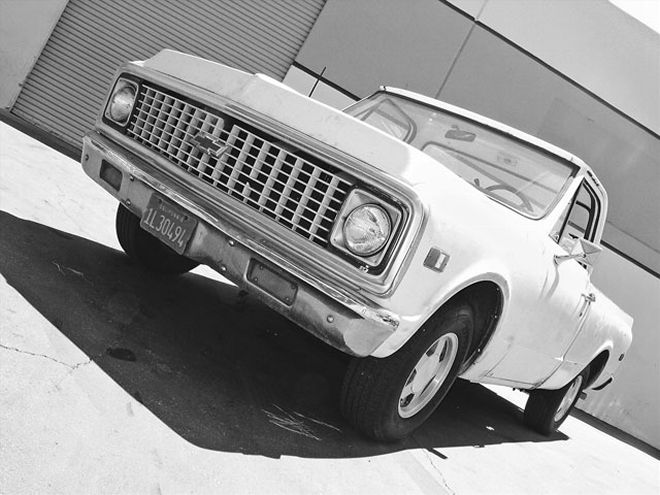

What were the 1980s good for besides some funny haircuts, dancey music, and the Reagan administration? I'm not sure either, but I do know the decade in question wasn't too good on the automobile, unless you had prolific wheels like a Lamborghini, Ferrari, or Porsche, any of which had to be red to go along with your white deck shoes, if you were so privileged. The squeeze actually tightened down on Detroit around '73, with smog restrictions sweeping across the nation, not just California. The effects of emissions awareness obviously killed the performance of any vehicle produced in the States, and this was literally a few years after we saw peak-production horsepower in the musclecar market. Horsepower numbers have only begun to climb in the last few years.
Anyway, back to the matter at hand. The '72 C-10 we have been working on would have normally slipped under that regulatory wire by a year or so and should have had a decent set of lungs to build performance on, but no such luck. Somewhere down the line a mid-'80s GM Goodwrench motor replaced the stock small-block, and the truck got the choke hold. The "new" motor was crowned with a QuadraJet and looked to be held in place by all the hoses and tubes that belonged to the emissions system. Now, I'm all for clean-burning vehicles, but the Big Three didn't really perfect that balance between performance and emissions until recently, and a well-tuned motor that can breathe probably isn't too bad off.
This old Chevy is slowly but surely getting there despite its inherited shortcomings. With the exhaust and ignition crossed off the list, it was on to the carb/intake situation. This area probably couldn't get any worse, and removing it was more relieving than pulling a big sliver out of your finger. Not needing anything crazy, we opted for a Professional Products Cyclone dual-plane manifold and a Barry Grant 650-cfm Speed Demon carb with an electric choke. The installation procedure is fairly basic and straightforward, but well worth the effort. Many people might be in the same boat as our '72, with what could very well be their first classic truck project, and need that extra push to dive into the mechanical side of things. Unfortunately, the Primedia Tech Center where we work on projects and store the chassis dyno is moving as I write this, so we haven't any dyno numbers to prove our efforts yet. Those numbers and more will be forthcoming, so stay tuned and follow along as we continue to make the world a better place one truck at a time.